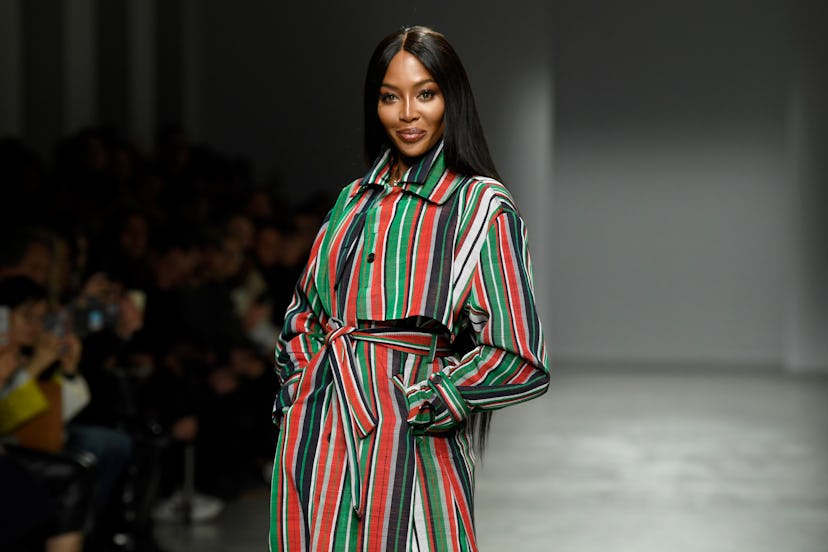Naomi Campbell and Kenneth Ize Made History at Paris Fashion Week
Kenneth Ize made his Paris Fashion Week debut, and his longtime champion Naomi Campbell closed the show.

You never know when Naomi Campbell might come stomping down the runway next. While she’ll still walk special occasions for top-tier shows, Campbell sometimes also uses her legendary presence to highlight up-and-coming talent as well. Case in point: On Monday, February 24, Campbell walked for Kenneth Ize, one of three African designers showing during Paris Fashion Week (a milestone in its own right).
The designer showed his label at Lagos Fashion Week in 2019, and was listed as an LVMH finalist last year as well. The winner of the LVMH Prize, the South African designer Thebe Magugu, premiered a special presentation of his collection at Paris Fashion Week, and Imane Ayissi has reportedly become the first black African designer to show his work on a Paris haute couture runway. (Only a few luxury labels, such as Dior, Chanel, and Givenchy, are permitted to call their clothes “haute couture,” so Ayissi’s entry into the elite club is truly an historic event.)
Ize showed his collection for the first time at Paris Fashion Week and was supported by Imaan Hammam, who opened the show, and Campbell, who closed it.
Campbell, a longtime champion of Ize, celebrated his Paris Fashion Week debut on Instagram. “I’m so proud of you 🙏🏾 Beautiful collection, thank you,” she wrote.
Hammam shared her congratulations to the designer for his history-making debut on Instagram as well.
Ize has been working with weavers of Asoke (Nigerian handwoven check designs) to incorporate into his collections, and for fall 2020, the designer worked with lacemakers from Vienna (his hometown) to integrate into the details of his designs. While his calling card is the bespoke tailoring he does for menswear, much of the fall 2020 collection that he debuted at Paris Fashion Week was notably feminine, as the looks worn by Hammam, Campbell, and many others demonstrated. Vertical multicolored stripes, patterns, and fringe were incorporated into a collection that called to mind his mother’s church looks in West Africa.